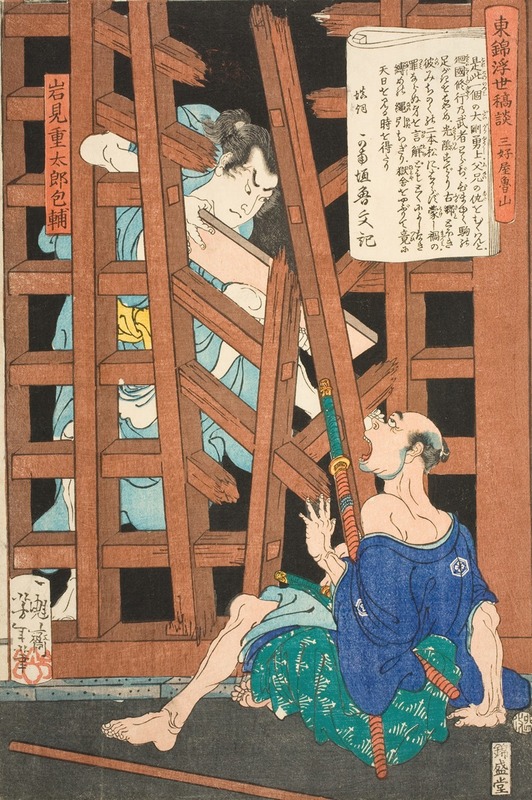
Miyoshiya Shunzan and Iwami Jūtarō
A hand-painted replica of Tsukioka Yoshitoshi’s masterpiece Miyoshiya Shunzan and Iwami Jūtarō, meticulously crafted by professional artists to capture the true essence of the original. Each piece is created with museum-quality canvas and rare mineral pigments, carefully painted by experienced artists with delicate brushstrokes and rich, layered colors to perfectly recreate the texture of the original artwork. Unlike machine-printed reproductions, this hand-painted version brings the painting to life, infused with the artist’s emotions and skill in every stroke. Whether for personal collection or home decoration, it instantly elevates the artistic atmosphere of any space.
Tsukioka Yoshitoshi (1839–1892) was a renowned Japanese artist known for his work in ukiyo-e, a genre of woodblock prints and paintings that flourished in Japan from the 17th through the 19th centuries. Yoshitoshi is often celebrated for his innovative approach to traditional subjects, his dynamic compositions, and his ability to capture the complexities of human emotion and historical narratives. One of his notable works is "Miyoshiya Shunzan and Iwami Jūtarō," which reflects his mastery in depicting historical and legendary figures.
"Miyoshiya Shunzan and Iwami Jūtarō" is part of Yoshitoshi's larger body of work that often focused on historical and legendary samurai, dramatizing their exploits and the turbulent times they lived in. Yoshitoshi's prints frequently explore themes of bravery, loyalty, and the warrior spirit, which were central to the samurai ethos. His work is characterized by a keen attention to detail, vibrant colors, and a dramatic use of light and shadow, all of which are evident in this particular piece.
The print likely depicts a scene involving Miyoshiya Shunzan and Iwami Jūtarō, figures who may be rooted in historical or legendary narratives. Yoshitoshi's ability to blend realism with the fantastical allows viewers to engage with the cultural and historical context of the Edo and Meiji periods. His work often served as a bridge between the traditional ukiyo-e style and the changing tastes of the Meiji era, which saw increased Western influence in Japanese art.
Yoshitoshi's career spanned a period of significant transition in Japan, as the country opened up to the West and underwent rapid modernization. Despite these changes, he remained committed to the ukiyo-e tradition, while also pushing its boundaries. His prints are noted for their psychological depth and the way they convey the inner lives of their subjects, often capturing moments of intense emotion or dramatic tension.
The artist's life was marked by personal struggles, including periods of poverty and mental illness, yet he continued to produce work that resonated with audiences both in his time and today. His legacy is evident in the continued appreciation of his prints, which are considered some of the finest examples of late ukiyo-e art.
Yoshitoshi's influence extends beyond his own era, as his work has been studied and admired by artists and scholars worldwide. His ability to convey complex narratives and emotions through the medium of woodblock printing has cemented his place as one of the great masters of Japanese art.
While specific details about the narrative or historical context of "Miyoshiya Shunzan and Iwami Jūtarō" may not be extensively documented, the work stands as a testament to Yoshitoshi's skill in bringing historical and legendary figures to life. His prints continue to be celebrated for their artistic merit and their ability to capture the imagination of viewers, offering a window into the rich tapestry of Japan's cultural history.





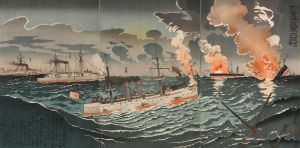

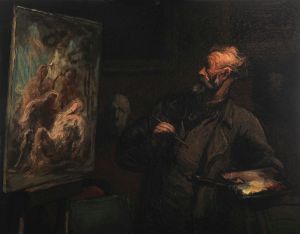
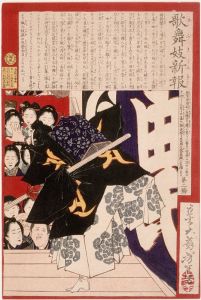
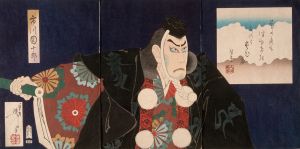
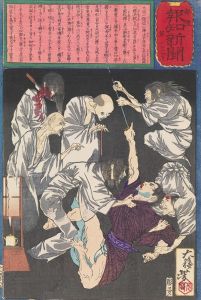
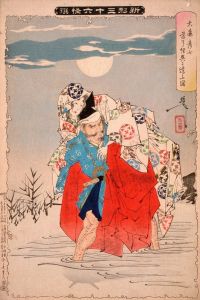
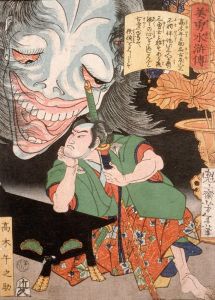
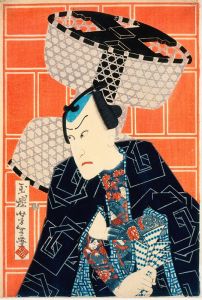
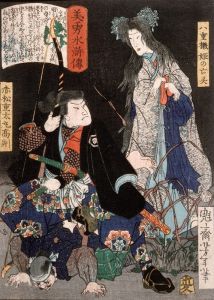

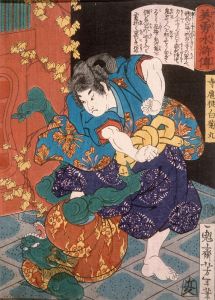
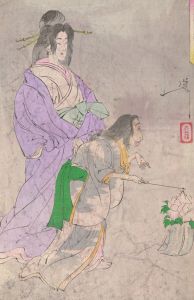
![Musha]taira no tomomori](/imgs/225657/s/tsukioka-yoshitoshi-mushataira-no-tomomori-bb591b96.jpg)